These 85 Facts Sent Me Down Some Absolutely Wild Rabbit Holes In July
🚨 Warning: This article contains mentions of murder, violence, and other sensitive topics. 🚨
It's no secret that I love a good fun fact. In fact (get it?), I write a series full of all of the incredible things I've learned each week.
E! / Via giphy.com
At the end of each month, I round up all of the facts from each week in one big post for your reading pleasure, which means there's a chance you've seen some of these facts in previous BuzzFeed posts.
And here are each of those posts in case you'd like to check them out:
So, without further ado, here are the 85 (!!!) shocking, surprising, and downright fascinating facts I learned in July:
1.On Aug. 8, 2004, a Dave Matthews Band tour bus in Chicago dumped 800 pounds of human waste over the Kinzie Street Bridge in Chicago. While the dumping was illegal, it actually gets worse: A tour boat was going under the bridge at the exact moment the poop began raining down. The Chicago Tribune reported that passengers "described a downpour of foul-smelling, brownish-yellow slurry that ruined their clothes and made several of them sick." The driver ended up paying a fine and served 18 months of probation, while the band donated $50,000 to environmental causes in Chicago as an apology.

2.The notebooks used by Nobel Prize–winning scientist Marie Curie are still incredibly radioactive nearly 90 years after her death. Historians have kept her notebooks in lead-lined boxes in France because when they were discovered, they were so contaminated with radium that they were radioactive. Radium has a half-life of 1,600 years, so it's believed they will remain radioactive for hundreds of years. Curie died in 1934 of aplastic anemia, likely due to overexposure to radium.

3.Billy Joel is best known for his song "Piano Man," during which he describes the eclectic cast of characters he meets while performing at a bar. Turns out, many of the people mentioned in the song were people Joel knew IRL! In 1972, Joel decided he needed to take a break from New York after getting in an argument with his record company, and moved to Los Angeles. Unable to record elsewhere due to his contract, he took a gig as a lounge singer at a bar, where he performed as "Bill Martin" to prevent being recognized.

Joel ended up writing "Piano Man" after getting to know some of the bar's regulars. He said that Paul, described in the song as a "real estate novelist," was based on a man named Paul who sat at the bar and claimed he was writing what was sure to become a modern classic. "John at the bar" was the bartender Joel worked alongside, while "the waitress practicing politics" refers to Elizabeth Weber, Joel's first wife, who waited tables at the lounge. The song's success surprised Joel. "The melody is not very good and very repetitious, while the lyrics are like limericks," he told Metro. "I was shocked and embarrassed when it became a hit. But my songs are like my kids, and I look at that song and think, My kid did pretty well."
4.Ernie Hudson, who played Winston in Ghostbusters, auditioned for the same role in the animated series but was denied the part after the director told him he didn’t sound enough like Winston from the movie. The decision was even more puzzling considering that Hudson had a long history of voice acting. Arsenio Hall went on to portray Winston in the animated adaptation.

5.Dolphins take sleeping with one eye open to the next level! They "half-sleep" so they can maintain their breathing. Because dolphins don't breathe automatically, they can't fully lose consciousness, otherwise they risk drowning. To ensure they keep breathing, they only allow one hemisphere of their brain to fall asleep at a time. They only close one eye while sleeping, and periodically alternate which side is sleeping.
Tumblr / Via giphy.com
6.I Love Lucy has gone down in TV history for many reasons, but one of the most notable might be the fact that it paved the way for reruns and syndication to dominate our TVs. During the sitcom's run, most shows were broadcast live. However, I Love Lucy was taped using 35 mm film, meaning there was a high-quality archive of every episode. To take advantage of the tapes, CBS began experimenting with reruns while Lucille Ball was pregnant during the show's second season. The reruns were successful, and more networks started to implement the same model.

Lucille Ball and Desi Arnaz were also incredibly business-minded. They negotiated lower salaries for their performances in exchange for the rights to the series. Once the couple understood the power of the rerun, they began exploring syndication by allowing other networks to air episodes of the show. This yielded the pair millions. Through their production company, Desilu, Ball and Arnaz also created and negotiated syndication rights for other classics, including Star Trek and Mission: Impossible.
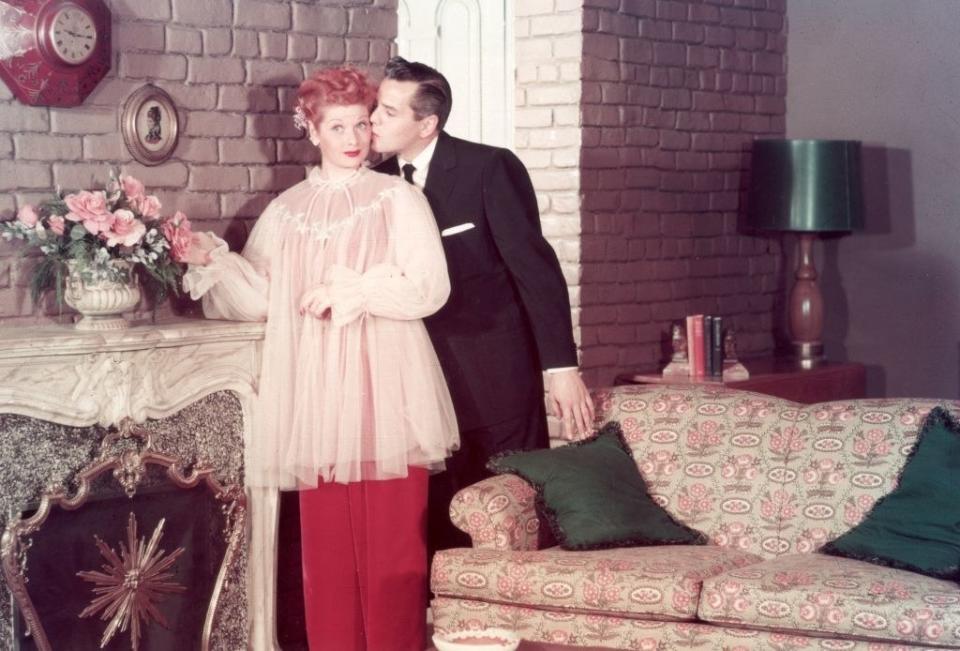
7.You've probably seen the painting that depicts the signing of the Declaration of Independence on July 4, 1776, in Philadelphia, but it actually never happened! In fact, the Declaration wasn't even signed on July 4 — that's just the day it was formally adopted by the Continental Congress. The bulk of the signees actually didn't sign the document until Aug. 2.
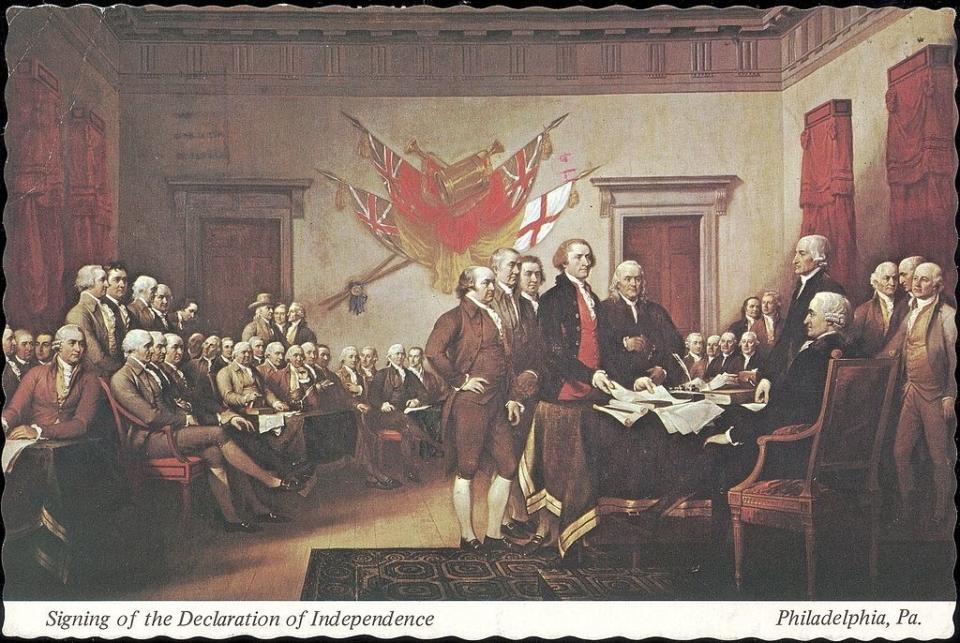
8.When food manufacturers developed margarine in the late 1800s, it stirred a national debate. While margarine is naturally white, it was often dyed yellow. This infuriated farmers, who thought that food companies were trying to influence people to buy margarine instead of butter. They lobbied for rules that would prevent margarine from being dyed yellow. In 1886 the Margarine Act was passed, placing expensive taxes on all margarine to appease the farmers. In addition, some states passed laws that all margarine had to be dyed bright pink to differentiate it, but companies fought back, claiming the pink shade was a major deterrent.

9.While lobsters are now a delicacy, back in the day, they were so cheap and easy to obtain that they were fed to prisoners and slaves. In fact, some people enslaved in Massachusetts bargained with their owners to only be fed lobster once or twice a week because they were so sick of it.
Food Network / Via giphy.com
10.Before the White House was built, the United States government constructed two other presidential residences that have never been occupied by a single president. When George Washington became the nation's first president, he lived in a private home in New York City. Plans were quickly developed to build Government House, a presidential mansion in Manhattan. During the home's construction, the nation's capital was temporarily moved to Philadelphia while Washington, DC, then known as the Federal District, was being developed as part of the 1790 Residence Act.

Despite the fact that Philadelphia was only a temporary capital, construction on a new presidential mansion began in 1792. The house was nearly complete when John Adams was sworn in as president in 1797. Adams refused to live in the house, saying that he believed he did not have congressional authorization to live there. The house remained empty until 1800, when the building was sold to the University of Pennsylvania. In 1800, Adams became the first president to live in the White House.

11.Could you imagine Frank Sinatra starring in Die Hard instead of Bruce Willis? Sinatra starred in The Detective in 1968, which was based on a book by Roderick Thorp. Thorp's next novel, while not a direct sequel, followed the same characters as The Detective. When studios set out to make Die Hard, they were contractually obligated to offer the role to a 70-year-old Sinatra, who turned down the part.

12.When Ariana Grande got a tattoo to celebrate her song "7 Rings," the meaning got a little lost in translation. The tattoo, which was supposed to read as "7 rings" in Japanese kanji, actually says "small charcoal grill." Apparently, when put together, the characters for "7" and "rings" spell out "shichirin," which is, indeed, a small charcoal grill. When Grande went to get the tattoo fixed, the meaning changed, but not in the way she hoped. Now the tattoo apparently reads, "Japanese BBQ finger."

13.Remember the plot point in 50 First Dates where Adam Sandler's character creates a video to play every morning for Drew Barrymore's character because she loses her memory every time she wakes up? That sweet scene actually inspired a new form of dementia therapy. A nursing home in New York started getting family members to record messages for its residents, and then played them every day to help with their memories.
CBS / Via giphy.com
14.Mark Twain, who wrote classics like The Adventures of Tom Sawyer, may have predicted his own death thanks to one strange coincidence. Twain was born in 1835, the same year that Halley's comet made an appearance. Halley's comet appears every 75 years, and scientists believe that it's the same comet every time, making it the first comet that follows a predictable, periodic pattern.
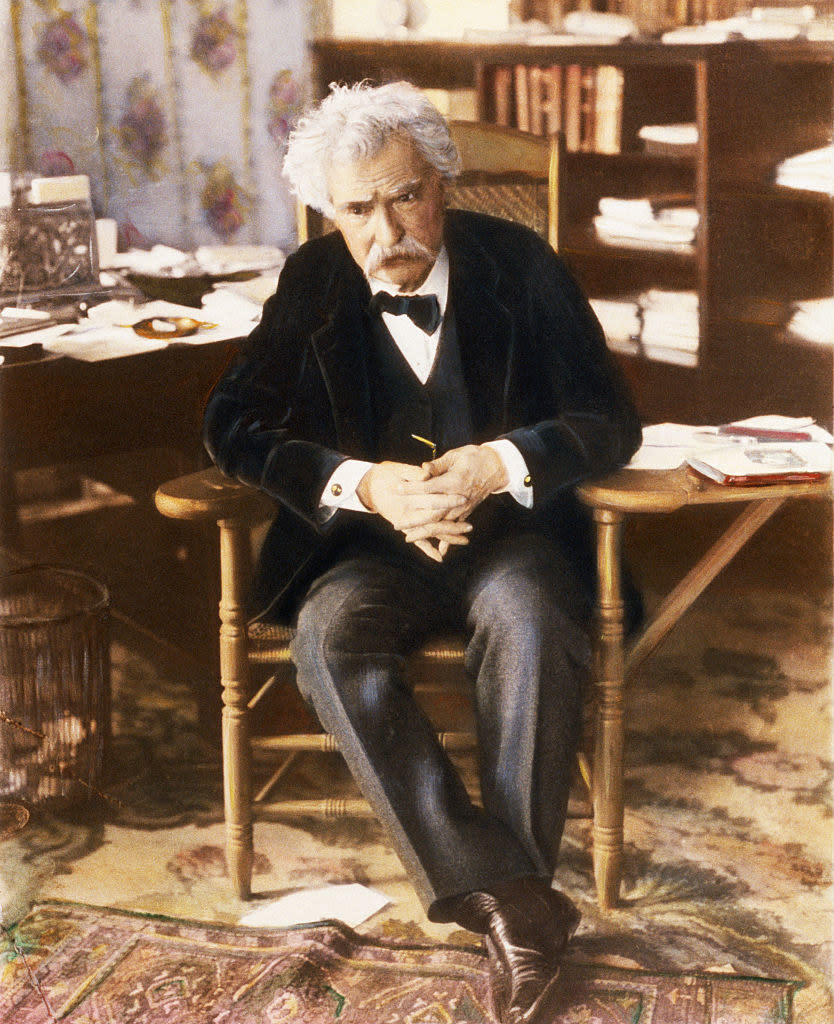
Twain knew all about the comet and would frequently refer to the fact that he was born during one of the comet's trips to Earth. In 1909, Twain told his biographer, "I came in with Halley's comet ... It is coming again ... and I expect to go out with it ... The Almighty has said, no doubt: 'Now here are these two unaccountable freaks; they came in together, they must go out together." Just a year later, in 1910, Twain died of a heart attack as Halley's comet was orbiting Earth.

15.Horses actually used to have five toes instead of one hoof, as they do today. Scientists have deduced that the toes disappeared as a result of evolution, with horses losing their side toes first. Their middle toes combined to create one large hoof.
Ascot Racecourse / Via giphy.com
16.Part of the reason Steve Jobs decided on the name "Apple" was that he wanted it to appear in the phone book before Atari, his former company. Apparently, there may have been some bad blood between Jobs and Atari. Rumors swirled that Jobs got stuck working as a technician on the night shift because he smelled so bad that others didn't want to work with him.

17.The Golden Raspberry Awards, typically known as the Razzies, made their debut in 1980 to celebrate the year's worst films. John Wilson got the inspiration for the show as a film student at UCLA. After volunteering at film festivals, Wilson said he realized there were far more bad movies being made than good ones. While hosting an Oscars viewing party in Los Angeles, Wilson decided to invite guests up to roast the worst movies they had seen that year, and thus the Razzies were born.

In the following years, the Razzies gained notoriety after the awards received mentions in the press. By 1984, Wilson had begun hosting an official ceremony, held the night before the Academy Awards, which catapulted the awards into the national spotlight. The ceremony is now an awards season staple, with some celebrities even showing up to accept their awards for Worst Actor.

18.We've already discussed the fact that Apollo 10 astronauts had to poop in bags taped to their butt, but did you know that the method sometimes got a little messy? During flight, a single turd reportedly escaped from one of the bags and began floating through the air. All of the astronauts on board refused to take ownership of the poop, which was quickly caught and disposed of, but the stinky scenario entertained listeners at ground control.

19.William Leonard Pickard was known as the Acid King because at one point, he was producing 90% of the world's supply of LSD. On a routine traffic stop in Kansas, a paranoid Pickard fled the scene, leaving behind a car full of drugs. Police began investigating Pickard, and a search of his property found that he was creating mass quantities of drugs, with police seizing about 400 million trips' worth of LSD. Pickard was sentenced in 2003 to two life sentences but was given compassionate release in 2020 because of the coronavirus pandemic.
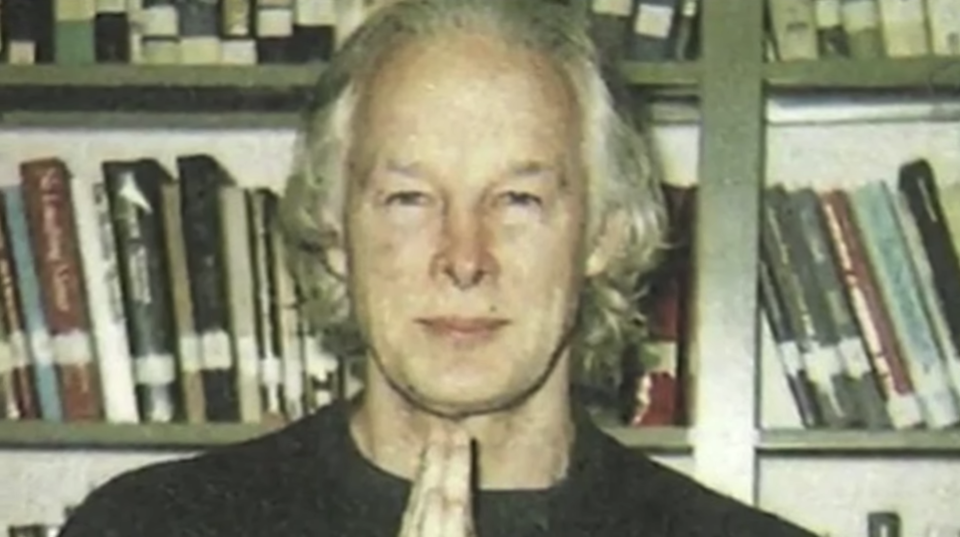
20.Female lions actually do 90% of the hunting for their families. Male lions instinctually protect their families, while females are responsible for feeding their pride.

21.You might know her as Madame Tussaud, but Marie Grosholtz was the woman behind those iconic wax figures. Grosholtz was born in France in 1761, where she developed an interest in wax figures. She worked as an apprentice under Philippe Curtius, a Swiss master of wax anatomy. Under his guidance, Grosholtz began not only making casts of internal body parts but also modeled the outward appearances of public figures.
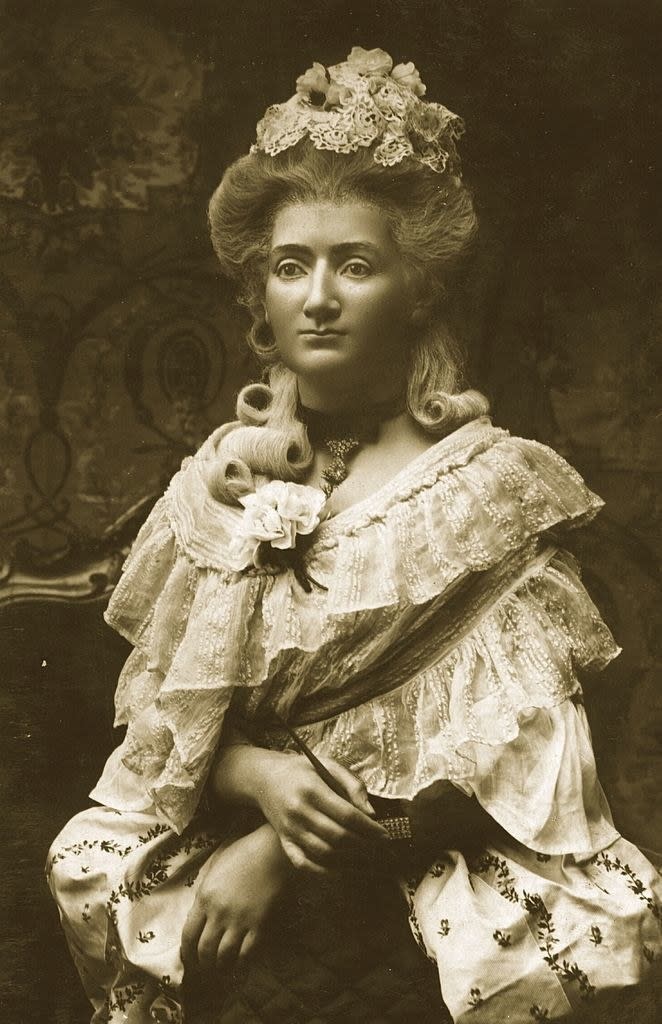
During the French Revolution, Grosholtz started casting guillotined heads and decomposing bodies. The profession became increasingly dangerous, especially as Grosholtz began breaking laws for having casts and molds of people who were no longer acceptable in the eyes of the French government. As a result, she was jailed. Upon her release, she escaped to England, where she held exhibits of her figures, creating the first version of her wax museum.

22.You've probably heard a thing or two about the conspiracy that the moon landing was faked. The theory gained traction in part because the flag appears to be blowing in the breeze, even though there's no wind on the moon. Turns out NASA wanted the pictures to look as theatrical as possible, so they designed a special flag for the moon landing that made it look like the flag was flapping in the (nonexistent) breeze.

23.In 1999, country singer Garth Brooks decided he was going to reinvent himself as Chris Gaines, a rock performer. The idea to give the singer a new persona started when Brooks entered negotiations to star in the movie The Lamb, which was set to tell the fictional story of Chris Gaines, a singer who struggled with life in the public eye. Gaines had an incredibly fleshed-out backstory, full of sex addiction, a house fire caused by arsonists, extortion, and a car accident that left parts of his face deformed. There was even speculation that Brooks had based Gaines's look on Keith Urban, although that story has never been confirmed.

Brooks recorded an entire album as Gaines as part of a "pre-soundtrack" to introduce the idea to the public. The album was supposed to represent Gaines's decades-long career and serve as a fictional collection of his greatest hits. Garth Brooks... In The Life of Chris Gaines debuted in September 1999. A made-over Brooks even went on an episode of VH1's Behind The Music and performed as Gaines on an episode of Saturday Night Live. Reception to the album was lukewarm, and many of Brooks's longtime fans expressed confusion about why he would take such a drastic career pivot.

Enthusiasm for the project quickly petered out, and Brooks, along with his record label, let the persona quietly fade out, and most of the footage was scrubbed from the Internet. In March 2021, Brooks announced that he was going to rerelease the album, and was even planning to drop previously unreleased material left over from the failed experiment. “You’re going to have Chris Gaines stuff nobody’s ever heard before,” Brooks said on his video series, Inside Studio G. “I love that project, so I’m excited.”

24.While you might know that around 90% of humans are right-handed, dolphins actually have us beat! A study found that over 99% of dolphins appear to favor their right side. When searching for food, the sea creatures pivot their bodies to the left, which allows them to keep their dominant right side closest to their prey. A similar pattern has been noticed in humpback whales as well.
University of California / Via giphy.com
25.Your eyes have immune privilege, meaning your immune system works harder to protect them from typical immune responses when threatened. Immune privilege protects vision from being affected by swelling or other inflammatory responses. So, what other areas have immune privilege? Scientists say your brain, as well as testes, placenta, and fetuses, are all protected as well.

26.When the band Primus released their song "Wynona's Big Brown Beaver" in 1995, many people assumed it was about actor Winona Ryder. In fact, even Ryder's then-boyfriend, Dave Pirner, who was the frontman for the band Soul Asylum, believed Primus, which was led by Les Claypool, was taking a dig at Ryder with the song.

Although Primus insisted the song was about a fishing trip, and was not written with any specific person in mind, it didn't stop Pirner from retaliating. During one of Soul Asylum's concerts, he changed the title of one of the band's songs to "Les Claypool's A Big Fucking Asshole." Claypool went on to say that he was shocked people assumed it was a reference to Ryder, and not country singer Wynonna Judd.

27.When spiders are done weaving their webs, they often eat them as a way to replenish their own silk supply.
Natural History Museum / Via giphy.com
28.Jonah Hill was only paid $60,000 for starring in The Wolf Of Wall Street because he said he would take any amount of money to work with Martin Scorsese. "I said, 'I will sign the paper tonight. Fax them the papers tonight. I want to sign them tonight before they change their mind. I want to sign them before I go to sleep tonight so they legally can't change their mind,'" Hill said on The Howard Stern Show. "I would sell my house and give him all my money to work for him." Meanwhile, Leonardo DiCaprio earned over $10 million for his role.
Paramount / Via giphy.com
29.While you were definitely taught that John Wilkes Booth assassinated Abraham Lincoln, you might not have known that killing the president wasn't actually his original plan. Booth originally wanted to abduct Lincoln, take him to Richmond, and give him up in exchange for Confederate soldiers who were being held in Union prisons.
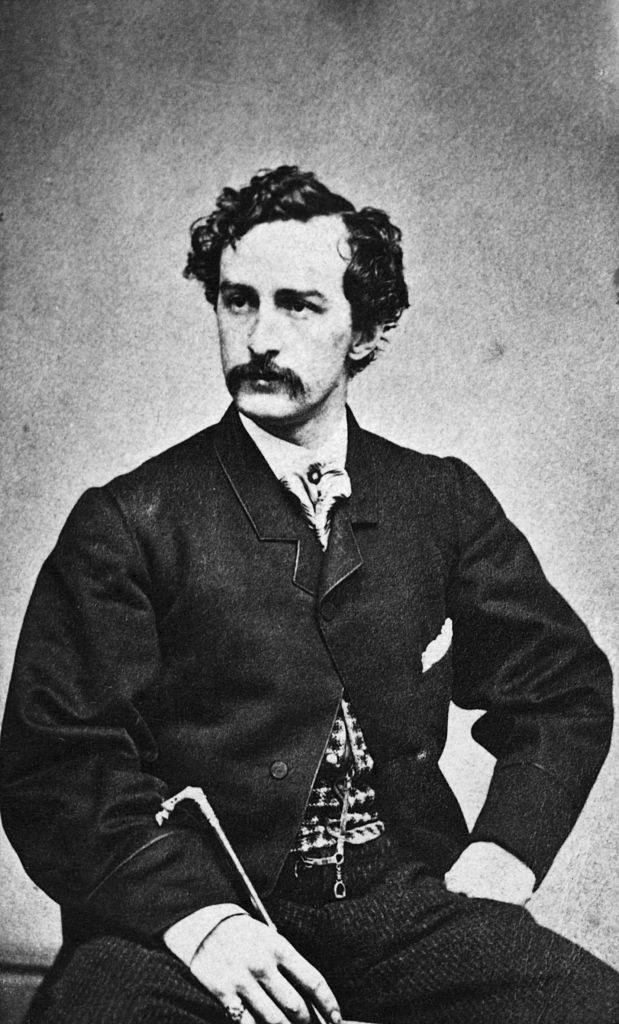
In 1864, General Ulysses S. Grant ordered a halt to prisoner exchange between Union and Confederate soldiers in an attempt to lessen the Confederacy's military capabilities, which were already depleting quickly. This enraged Booth, who devised the plan after telling one of his co-conspirators that the Union was selfish for allowing their own men to remain in prison because they had plenty of soldiers to spare. Booth, along with six other men, created several scenarios. One was to capture Lincoln while he was traveling to his summer home, while the other was to kidnap him while he was watching a play at Ford's Theater.

On March 17, 1865, Booth heard Lincoln was going to see a play, and the men decided to carry out their plan. Much to Booth's chagrin, he got some false intel, and the men decided the plan was too risky. Soon after this, Booth began vocalizing his desire to kill, not kidnap the president. On April 14, 1865, they carried out their plot, killing the president at Ford's Theater.

30.In Switzerland, it is illegal to own only one guinea pig because they get too lonely. Guinea pigs are very social and need the company of other guinea pigs to thrive.
Gifsee / Via giphy.com
31.In 1915, Cecil Chubb purchased Stonehenge for about $7,770 dollars at auction on a whim. Chubb, who was supposedly at the auction to purchase a new set of curtains, gave the impulsive purchase to his wife, who was furious. Three years later, the couple gave the monument to their town, under the condition that the town couldn't charge more than a shilling to enter, and locals could always enter the grounds for free. Today, it costs about $24 to visit Stonehenge.

32.From 1910 to the 1950s, hundreds of thousands of American women were cruelly imprisoned for having sexually transmitted diseases, then were subjected to dangerous and poisonous treatments under the guise of experimentation. This government measure, known as The American Plan, targeted women who were believed to be "suspicious," forced them to undergo STI examinations, then imprisoned them if they tested positive. The American Plan was based off of similar measures in Europe.
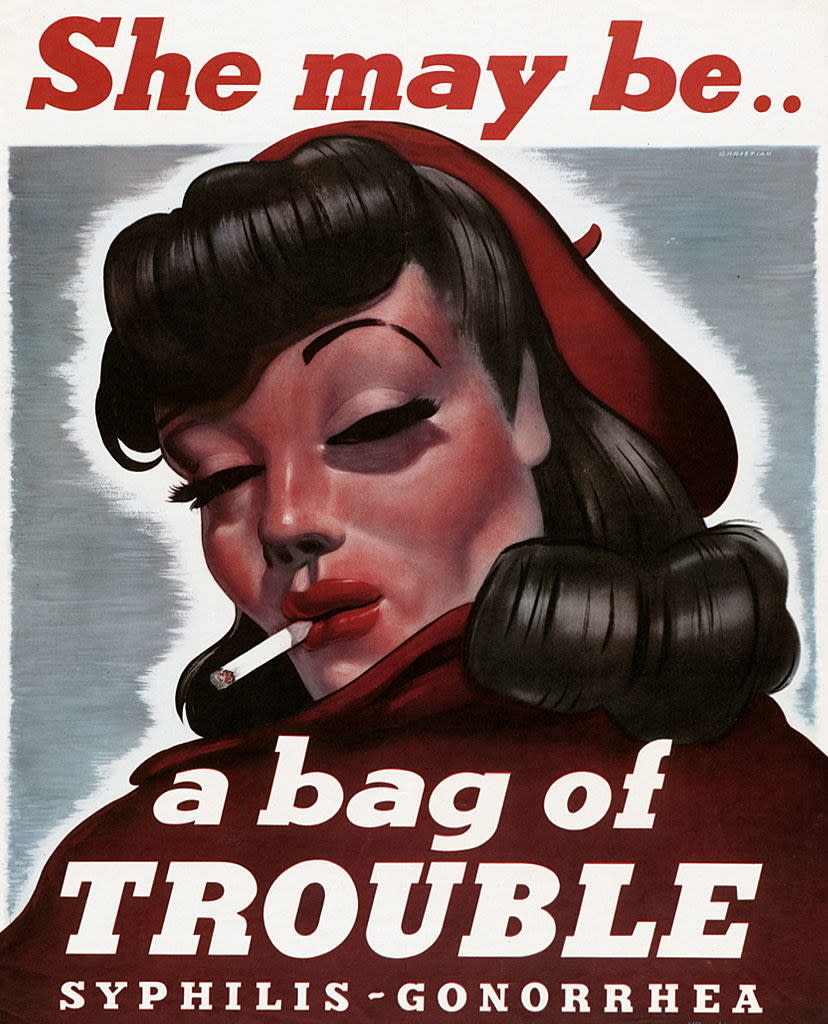
While many of the records from The American Plan have been lost or destroyed, some of the women were imprisoned for months. They were often injected with mercury or forced to ingest arsenic, which were common syphilis treatments at the time. If the women misbehaved, they were beaten, while repeat offenders were sterilized.

So, how did The American Plan come about? During World War I, many soldiers were testing positive for various STIs. The government immediately blamed women for what they said was a "national security threat." They passed a law that outlawed sex workers from coming within five miles of any military training camp in the country but soon learned that many of the soldiers were getting infected on visits to their hometowns. The American Plan was enacted to detain any woman who was deemed suspicious, and immigrants and women of color were often targeted more heavily. The plan officially came to an end in 1970, but many states stopped enforcing it during the 1950s.

33.When tiger beetles run, they sprint so quickly that their vision becomes completely blurred, essentially rendering them blind while hunting down prey. The beetles can run at speeds exceeding five miles per hour, which considering their size, is pretty dang quick!

34.Although Alice in Wonderland was published in 1865, China decided to ban the classic decades later in 1931, and for a reason you might not expect! While the book had previously been banned for mentions of drug use, the governor of the Hunan Province banned the book because it featured talking animals. “Bears, lions, and other beasts cannot use human language,” he said. “To attribute to them such a power is an insult to the human race.”
Disney / Via giphy.com
35.Foolish people were originally called "jay," so the term "jaywalker" came from the idea that people who ignored street signs were foolish. The word is actually believed to have originated in Kansas, and has roots in the term "jay-driver," which, you guessed it, meant someone who didn't follow street signs while maneuvering their carriage.
ABC / Via giphy.com
36.In 1967, the state of Florida passed a law that gave Disney World the right to build its own nuclear plant. Despite this ruling, Disney never acted on building the plant, in part because Walt Disney was supposedly really into the environment, which some say can be seen in the lack of cars and reliance on electricity in Disney's plans for EPCOT. In 2019, state officials proposed eliminating the nuclear law, because they felt having the possibility of nuclear power at a family destination like Disney World was inappropriate.

That's not the only form of political power the Disney empire has in Florida. In the late 1960s, Disney became its own political jurisdiction called the Reedy Creek Improvement District. Under this jurisdiction, Disney technically has the right to create its own laws and form its own police force. The company was even given the authority to manufacture alcohol, although they've never exercised the right.

37.The hyoid, a small, horseshoe-shaped bone at the base of your neck, is the only bone in the human body that doesn't touch another bone. It's technically floating in your body, although it is attached to muscles that are instrumental in breathing, speaking, and swallowing.

38.Some say that Jenny, a cat onboard the Titanic, predicted the ship's tragic sinking. Jenny wandered aboard the ship while it was being built in Belfast, Ireland, and soon became a "ship cat," meaning she was allowed to roam wherever she pleased and was expected to get rid of rats who snuck on board. When Jenny first boarded the ship, she was pregnant and gave birth to a litter of kittens shortly before the ship was planned to set sail.

Jenny and her litter were taken care of by Joseph Mulholland, an Irish man working on the ship. One day, Mulholland noticed that Jenny was taking her kittens off of the boat one by one, and leaving them on dry land. This freaked Mulholland out and he decided not to board the ship for its inaugural journey, saving his life. Sadly, it's believed that Jenny died when the ship sunk.
20th Century Fox / Via Joseph Mulholland
39.The Seinfeld finale was the first time a TV show ever commanded over $1 million for an ad spot. Before this, only Super Bowl ad slots had ever gone for that much. A 30-second ad slot during the episode was said to cost $1.7 million, which was three times the ad rate of a typical episode of the show.
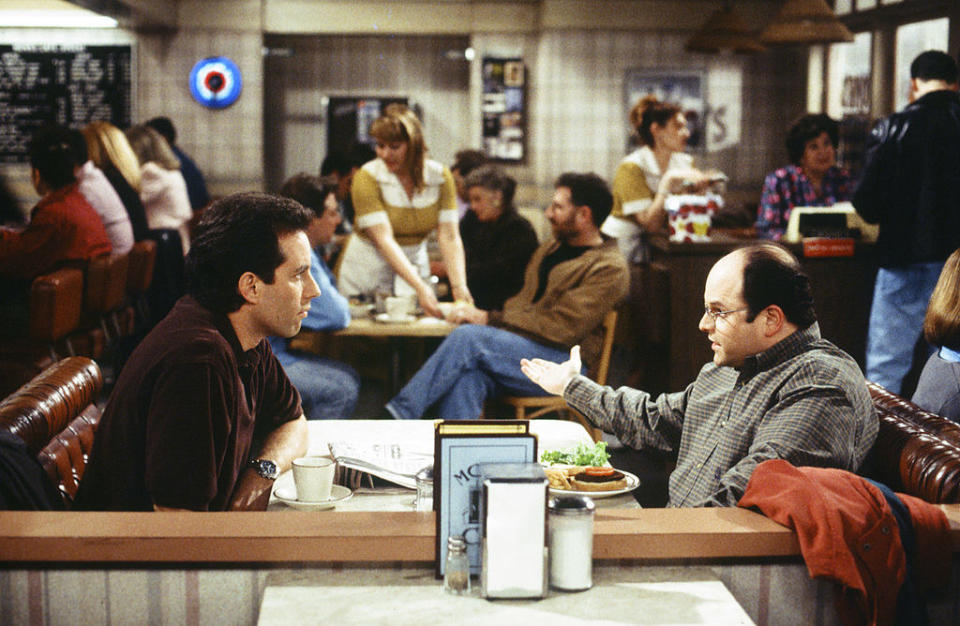
40.Before he starred on Star Trek, James Doohan served in the Canadian Air Force and was one of the 14,000 Canadians present in Normandy on D-Day. In fact, Doohan was even called the "craziest pilot in the Canadian Air Force," by his peers after flying a plane through two telephone poles, just to prove he could. Doohan had a rough childhood and decided to escape his family by joining the Royal Air Force. By 1940, Doohan had worked his way up to lieutenant and was sent to Europe to fight in World War II.

In 1944, Doohan's division was sent to Normandy to fight in D-Day. They made it to land and had to battle two German battalions that had set sand traps, in addition to German snipers. The division was able to traverse the entire beach, and Doohan himself took out two of the German snipers before being shot six times. One of the bullets completely blew away his middle finger. A bullet that hit his chest would have been fatal had he not been carrying a cigarette case in his pocket. Doohan made a full recovery and even went back into the military before attending drama school and pivoting to acting. He often attempted to hide his missing middle finger during his performances.

41.A previously unknown self-portrait of Vincent van Gogh was recently discovered behind another one of the artist's paintings. The art was discovered when museum officials were taking an X-ray of "Head of a Peasant Woman," a work of art that dates back to 1885, while preparing for a new exhibition. The secret portrait was hidden behind layers of cardboard and glue and will need to undergo careful restoration methods. van Gogh supposedly used to reuse canvases in order to save money.

42.The world's most expensive man-made object is the International Space Station, which cost between $100 and $150 billion to construct.

43.Chien-Shiung Wu, who was believed to be the only Chinese person to be part of the Manhattan Project, was known for disproving a law of nature that had previously been believed for decades. Wu worked as a senior scientist on the development of the atom bomb in the 1940s and developed a process for uranium enrichment. She also was known for developing improved Geiger counters, which were instrumental in detecting radiation levels.

After the Manhattan Project wrapped, Wu was offered a position at Columbia University. In the mid-1950s, she was approached by Tsung-Dao Lee and Chen Ning Yang, two theoretical physicists who wanted to disprove the law of conservation of parity, which essentially stated that two mirrored physical systems behave in the same way, without differentiating between left and right. Wu ended up contributing to the research that finally disproved the theory. Despite her work, only Lee and Yang won the 1957 Nobel Prize for the finding.

44.There are 293 ways to make change for a US dollar. The various ways include every denomination of coin, including not only the standard pennies, nickels, dimes, and quarters, but half-dollars, which have typically only been produced for commemorative reasons since 2002.
Freeform / Via giphy.com
45.During the Apollo 17 mission in 1972, Eugene Cernan, who was the last astronaut to walk on the moon, was preparing the lunar rover to take footage of the spacecraft's departure when he decided to kneel down and trace his daughter Tracy's initials into the moon dust.

In the years following the mission, Cernan said that he wished he had carved his daughter's name into the rock instead of just tracing it into the dust. In 1984, Cernan saw a painting depicting Apollo 17 by Alan Bean, who was a fellow astronaut. Bean had painted "Tracy" on one of the rocks. Cernan was touched by this effort, and the rock has been known as Tracy's Rock ever since.

46.The etymology of the Cesarean section, or C-section, is a source of debate, but it's commonly credited to being named after Julius Caesar. Some historians even think he might have been the first child ever born by C-section. In the 1500s, babies who were born via C-section were believed to have great strength, and in some instances, mythical powers.

47.Woody Harrelson's father was a professional hitman who spent years in prison. When Woody was 7 years old, Charles was convicted of killing a Texas grain farmer. He was given a 15-year sentence but was released for good behavior in 1978 after serving 10 years. Just a year later, Charles was hired by drug lord Jimmy Chagra, who faced a life sentence for drug smuggling. Chagra paid Charles $250,000 to take out US District Judge John H. Wood Jr., who was presiding over the case. Wood was known for giving harsh sentences in drug cases and had earned the name "Maximum Wood" due to how often he handed down life sentences.
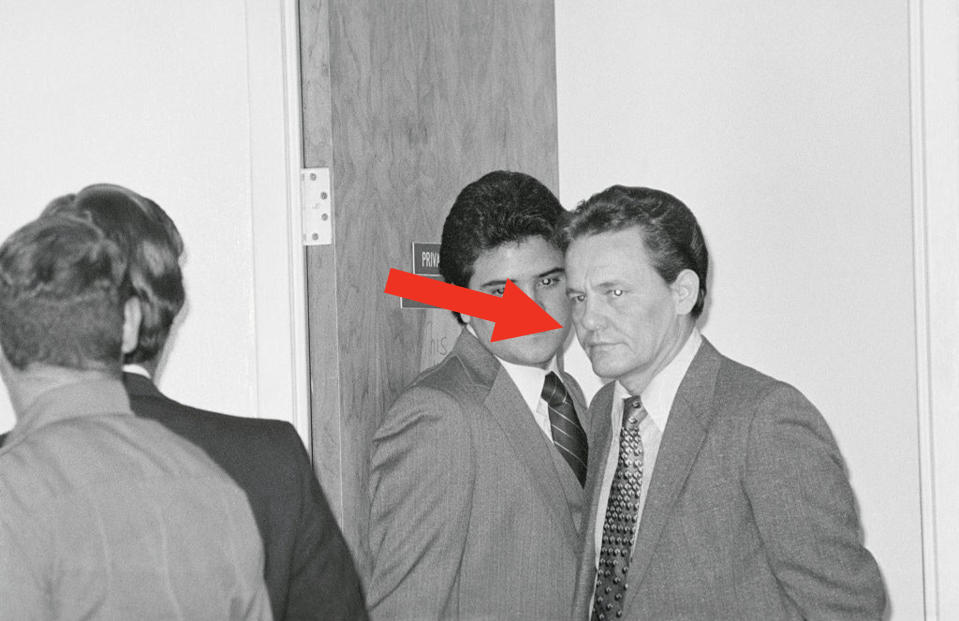
On May 29, 1979, Wood was killed with a gunshot to the back outside his home in San Antonio, Texas. It marked the first time a sitting US federal judge had been assassinated. After an intense manhunt, the FBI arrested Charles. Woody, who was in his late teens, knew nothing about his father's crimes until he heard broadcasters mention a murder trial involving Charles V. Harrelson. In 1981, Charles was handed two life sentences for Wood's murder.
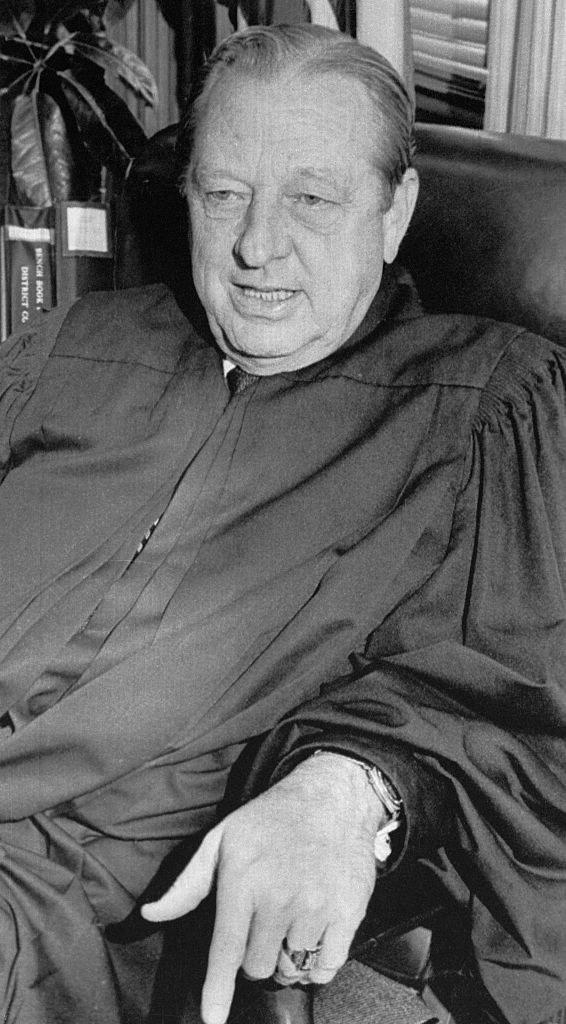
During his trial, Charles claimed that he had assassinated John F. Kennedy. No one believed him, and he later said that he made up the story in "an effort to elongate my life," thinking it would launch another investigation. Despite this, Lois Gibson, a forensic artist, believes that Charles was one of the "three tramps," a group of suspicious men who were seen shortly after Kennedy's assassination and have since been linked to several conspiracy theories about their involvement.
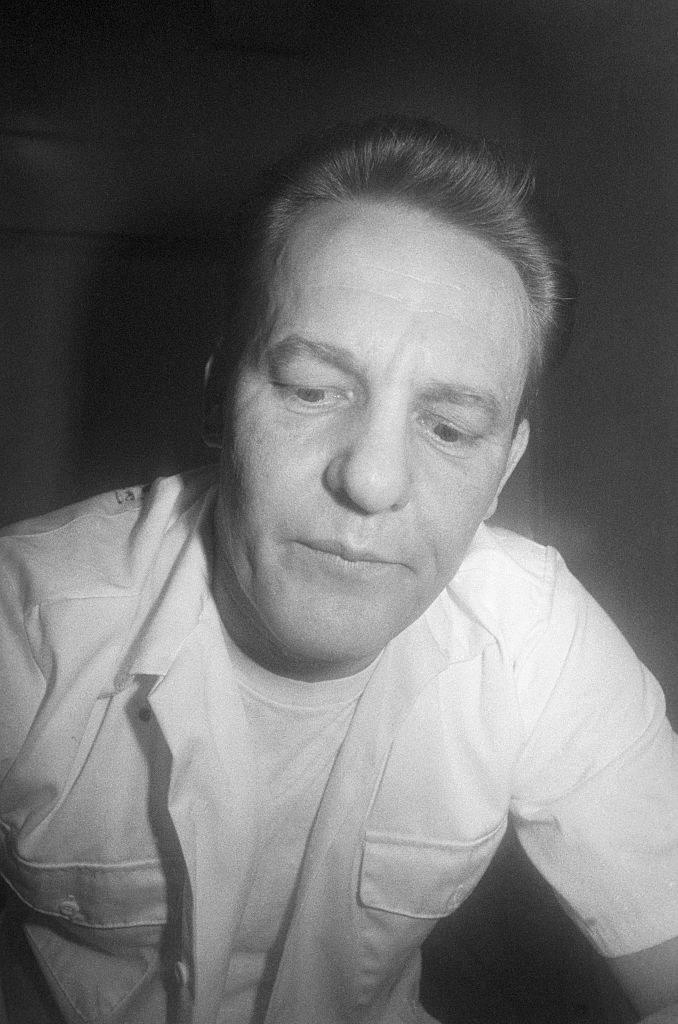
Even after being sentenced, Woody decided he wanted to have some sort of relationship with Charles. He didn't necessarily see him as a father figure, but as a friend. "I was born on his birthday," Woody told the Guardian. "They have a thing in Japan where they say if you’re born on your father’s birthday, you’re not like your father, you are your father, and it’s so weird when I would sit and talk with him. It was just mind-blowing to see all the things he did just like me." Woody even spent more than $2 million on legal fees to get his father a new trial after Chagra was acquitted of conspiracy charges. The attempt didn't work, and Charles spent the rest of his life in prison. He died in 2007.

48.You might have thought that a legendary residence like the White House would have been among the first homes in the world to use electricity. However, the Iolani Palace actually beat it to the punch! In 1887, the palace became the first landmark in Hawaii to use electric lights. Just before converting to electricity, King Kalakaua traveled to New York City to meet Thomas Edison, one of the leaders in advancements in electricity.

49.Believe it or not, bears are actually considered some of the most intelligent land animals, with scientists even comparing their intelligence to that of primates. Their brain power really kicks in when it comes to evading predators and hunters. Grizzly bears have been spotted covering their own tracks and have been known to hide behind rocks and trees.
US National Archives / Via giphy.com
50.Stephen Hillenburg, the creator of SpongeBob SquarePants, was actually a marine biology teacher before turning to animation. As a child, Hillenburg was fascinated by the ocean, and he taught marine biology before deciding he wanted to focus on animation and filmmaking instead. After earning a degree in animation, Hillenburg worked on Rocko's Modern Life while trying to develop a show of his own.
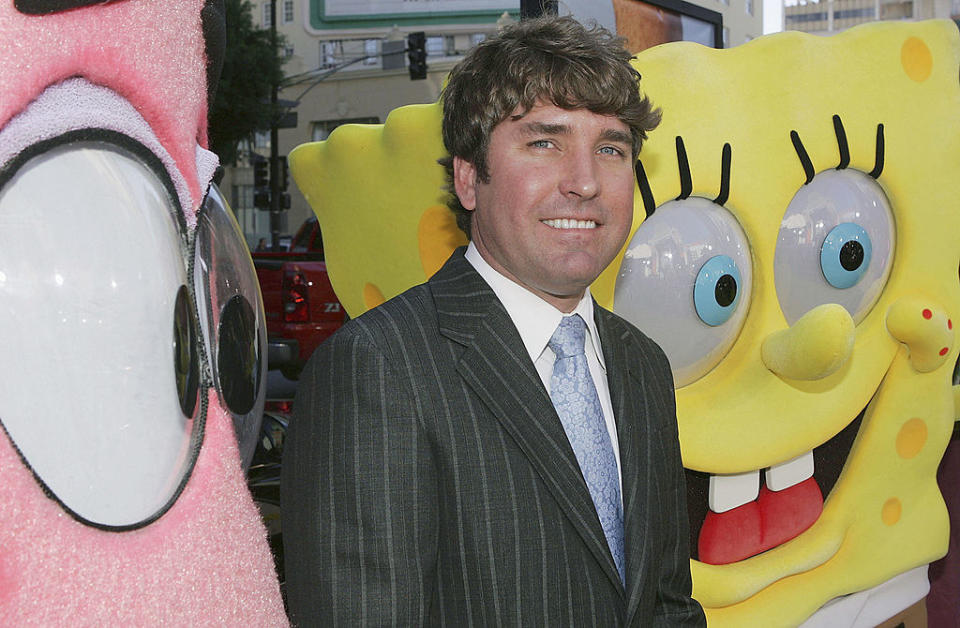
After a Rocko's Modern Life writer saw Hillenburg's drawings of sea creatures, he realized he could bring his love of the ocean into his current career. "It started me thinking, if I'm going to do a show, I would do it about these invertebrates and these crazy animals that exist in the ocean, and it would be the perfect fusion of the things that I did," he said. "It was that moment where I said, maybe I should pursue this, you know, go down this path." While the show was not an initial hit, it has since brought in billions in revenue and has become one of the longest-running animated series.
Nickelodeon / Via giphy.com
51.You definitely already knew blue whales were massive creatures, but I had no clue that baby blue whales emerge from the womb weighing three tons! They gain about 200 pounds a day during their first year of life. By the time they become fully grown adult whales, they weigh about 150 tons.

52.In 1921, president Warren G. Harding developed the Veterans' Bureau and appointed Charles Forbes to serve as the bureau's first director. As director, Forbes was in charge of millions of dollars, most of which was supposed to help build veterans' hospitals, provide veterans with continuing education and vocational training, and aid veterans who had been injured in combat. Instead, Forbes supposedly received financial kickbacks from the construction companies he hired, sold supplies that were slated for the hospitals and pocketed the money, and partied the entire time he was supposed to be scouting out hospital locations.
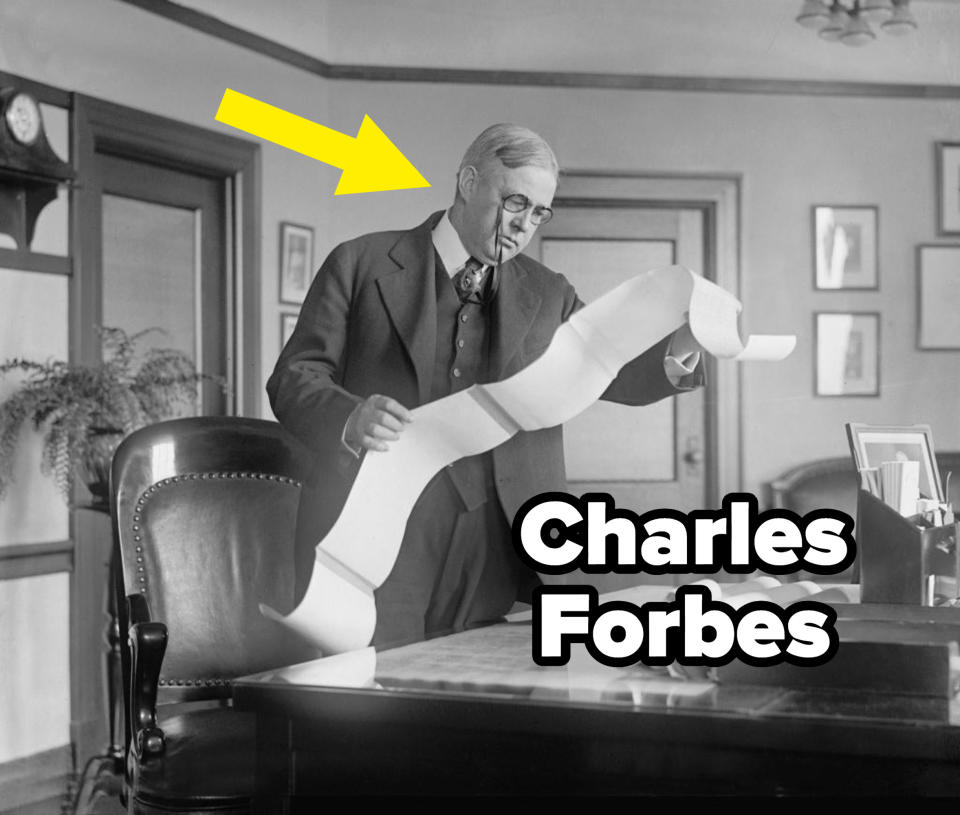
In the two years he served, Forbes embezzled $2 million from the bureau. Of the 300,000 veteran insurance claims he received, he only accepted 47,000 of them. When Harding found out about Forbes' extensive theft and mismanagement, he told Forbes that if he resigned from his position, he could escape to Europe to avoid prosecution. Forbes agreed, but returned to the United States soon after and paid Harding a visit at the White House. When Harding saw Forbes, he was apparently so enraged that he tried to strangle him, shaking him "as a dog would a rat." By 1924, Forbes was indicted and served about 20 months in prison.
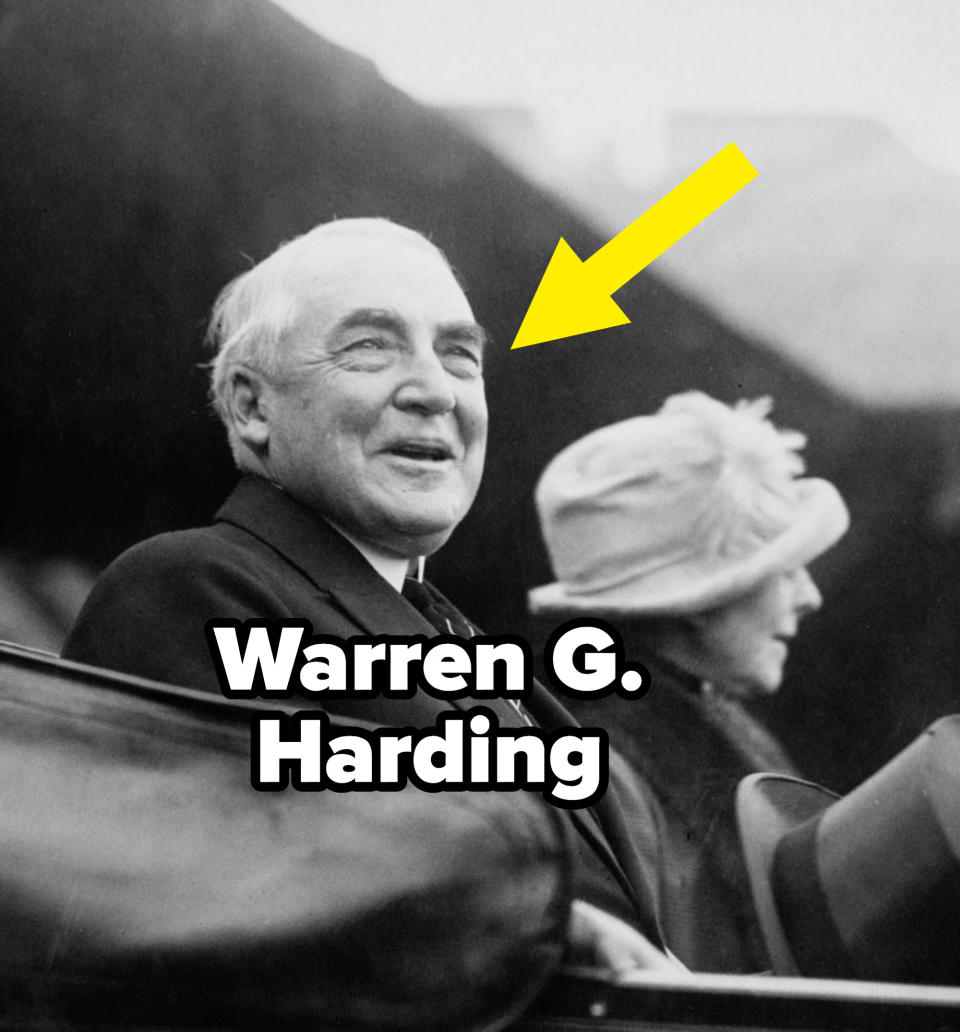
53.Bet you weren't expecting corn to be one of the many culprits behind super humid summers! Corn sweat, or water vapor released from its leaves, can make humidity levels increase by up to 15%. Corn adds about 4,000 gallons per acre of water vapor to the atmosphere every day.
Modgif / Via giphy.com
54.In 1972, Bridget Loves Bernie debuted on CBS. The sitcom, which was based on both a play from the 1920s and a radio play from the 1940s, followed a wealthy Catholic woman who marries a Jewish cab driver who is an aspiring playwright. The show was an instant hit and became the highest-rated new TV show of the 1972–73 season.

Despite its success, the show was quickly canceled due to backlash. Several Jewish organizations said the show made a mockery out of the Jewish faith, while others' chief complaint was "its treatment of intermarriage in a favorable and desirable light." Meredith Baxter, who played Bridget, said members of the show received bomb threats because of the subject matter. After hearing the criticism, CBS decided to pull the plug on the sitcom. "Intermarriage is on the rise, nevertheless," David Birney, who starred as Bernie, said months after it ended. "The threat doesn’t come from a harmless show such as ours, but from within.”

55.While you probably knew that houseflies make noise by flapping their wings, you might not have known that the noise is always in the key of F. The average housefly flaps its wings about 190 times a minute, which the human ear hears as a frequency of a pitch along the F scale. Bumblebees and honeybees also buzz on the F scale.
Scientific Visuals / Via giphy.com
56.In 1993, the band Soul Asylum released the song "Runaway Train." The song, which had been written in just one sitting by band member Dave Pirner, became a hit for the band, so they decided to capitalize on the song's success with a music video. Instead of filming a typical music video, the band decided to use it as an opportunity to show the names and pictures of missing children.

Columbia Records initially vetoed the idea, but ended up permitting it in the end. Soul Asylum partnered with The Center for Missing and Exploited Children to make the video, which ended with the message: "If you’ve seen one of these kids, or you are one of them, please call this number." Several versions of the video were made for other countries, featuring different missing children. “They did a version in Canada, and they did a version in England, and it really kinda caught on in a public service announcement sort of way," Pirner said. "Its heart was really in the right place."
As a result of the video, 25 of the 36 children who had been featured were found, and many of them were reunited with their families. “To me, I couldn’t believe you could actually transcend the music video and have it cross over into real life," Pirner said. "It was a really cool experience to realize that — wow! — there is the potential for entertainment to have a positive effect on the real world. And that’s something that probably doesn’t happen enough."

57.Looks like even royals have some peculiar pet names for their significant others! Prince Philip allegedly called Queen Elizabeth II "cabbage" and "sausage." While it's unclear where the sausage name came from, it's speculated that "cabbage" refers to the French phrase "mon petit chou," which means "my darling," but technically translates to "my little cabbage."

58.Story Musgrave, who commanded the crew that successfully repaired the Hubble Space Telescope, is the most formally educated astronaut. Before becoming an astronaut, Musgrave served as a Marine, where he completed his GED. After leaving the Marines, he went on to earn six academic degrees, including bachelor’s or master’s degrees in mathematics, operations analysis, chemistry, literature, and physiology, and a medical degree from Columbia University.
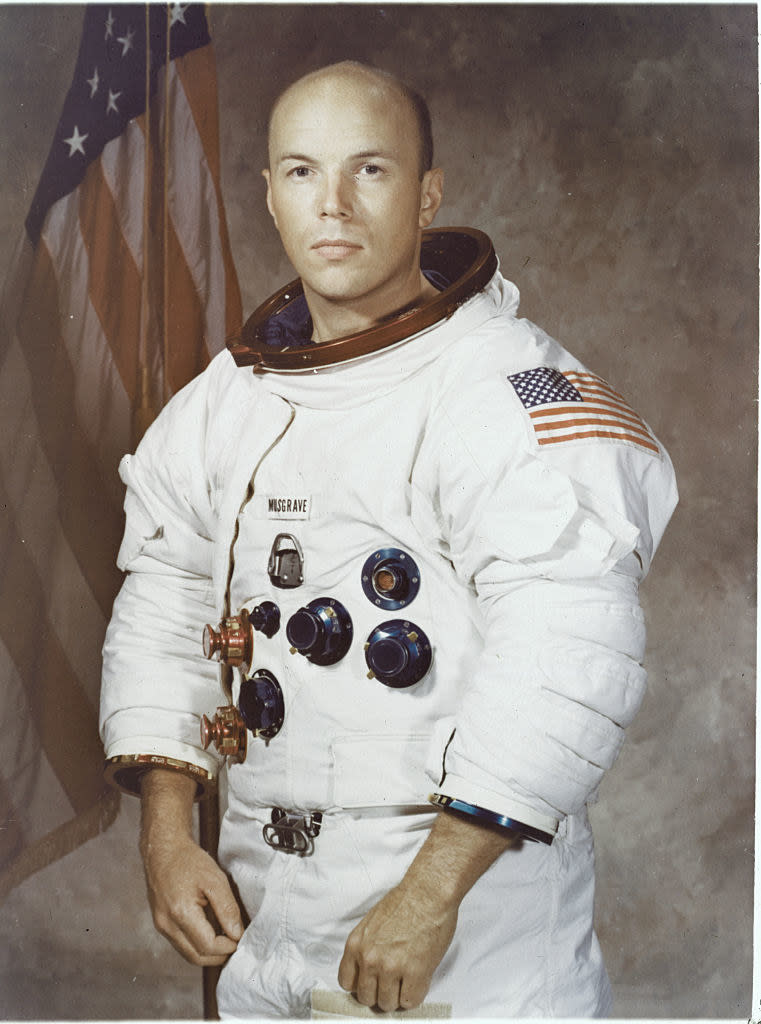
This expertise caused Musgrave to be hand-selected by NASA in 1967. During his training, he helped develop space suits, life-support equipment, air locks, and maneuvering equipment that would be used for space walks. In addition to his space career, Musgrave also served as a trauma surgeon at Denver General Hospital while working for NASA. Musgrave ultimately went into space six times and is the only person who has flown on all five space shuttle orbiters.

59.A zebra's stripes are believed to be bug repellent, protecting the animals from blood-sucking insects. The stripes also act as camouflage, with the wavy pattern blending in with the movement of grasses, distracting predators. Speaking of predators: Lions, who are zebra's main opponent, are colorblind, so the distinctive black and white pattern of a zebra's coat doesn't stick out to them.
BBC / Via giphy.com
60.The creation of Batman was not without drama! Bob Kane, who provided the art, and Bill Finger, who was a writer, developed the concept for Batman together. Finger was behind some of the caped crusader's most iconic elements: his suit, secret identity as Bruce Wayne, and Gotham City were all Finger's invention. Despite Finger's contributions, Bob Kane was the only person credited in the comic books.
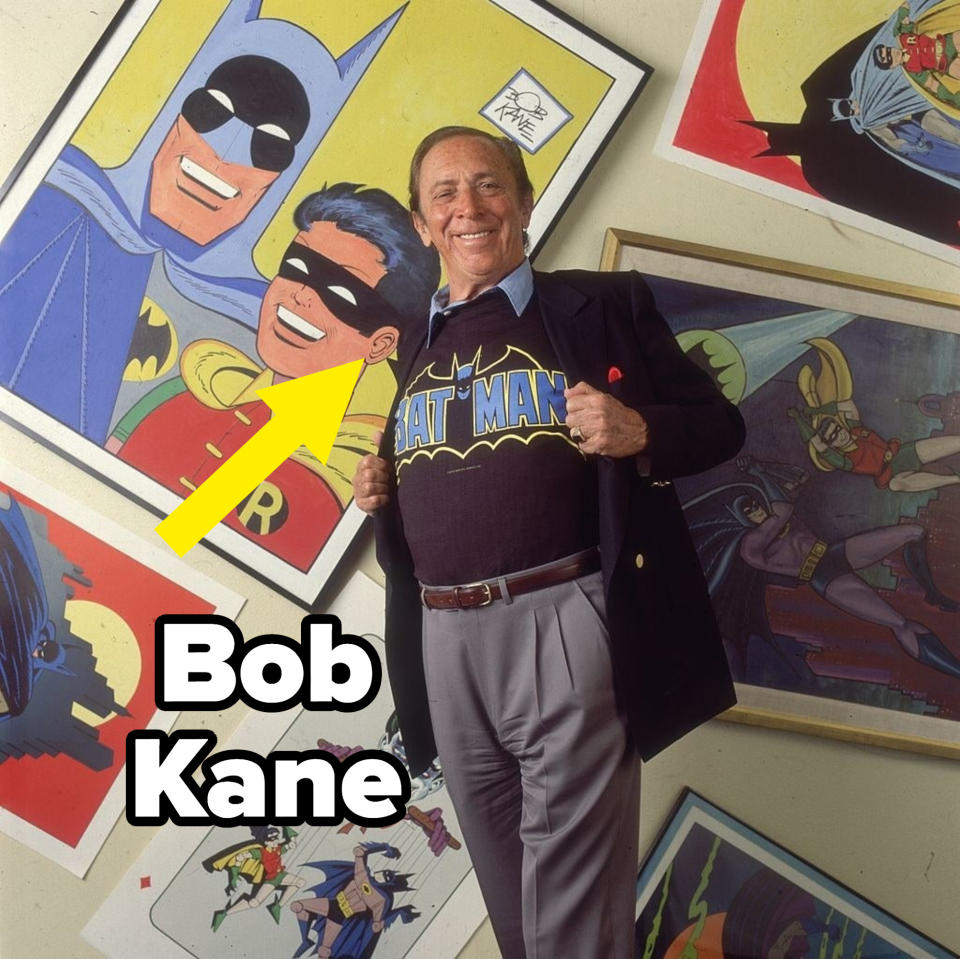
In 1939, Kane developed the initial concept for Batman. When Finger caught wind of the concept, he came up with the details that turned Batman from a generic superhero into the beloved character. It's even believed that Finger, with the help of Jerry Robinson, created the Joker, which Kane also took credit for. Even though the creation of Batman was clearly a collaborative effort, Finger's name never appeared on any Batman-related material, and he never saw any profits from his work. He died in 1974.
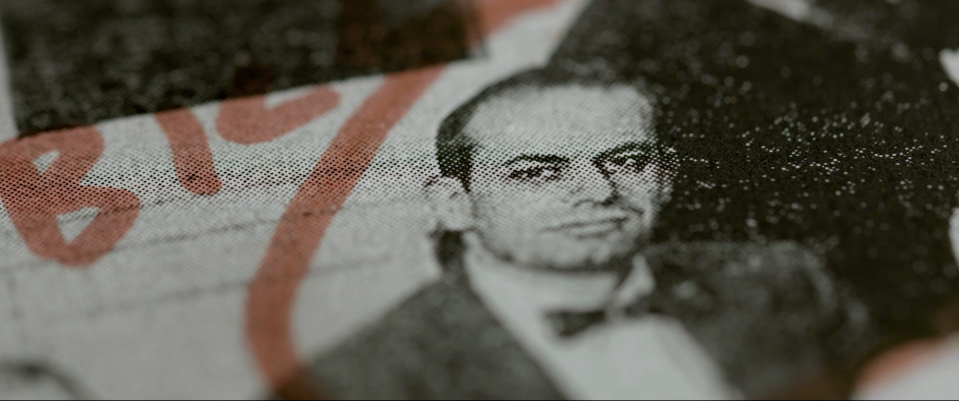
As Batman proved to be an enduring success, the Finger family attempted to gain recognition for Bill's creation. In 1989, Lyn Simmons, Finger's wife, wrote a letter to Warner Brothers asking them to posthumously credit Finger in the movie Batman. They declined because they didn't want to involve themselves in a legal matter. Finger's only son, Fred Finger, recorded an interview and personally reached out to DC Comics to ensure his father would finally receive his deserved credit. In 2014, Athena, Finger's only grandchild, won the fight against Warner Brothers. In October 2015, Finger's name appeared in the credits of a Batman comic for the first time.
Warner Brothers / Via giphy.com
61.Did you know that a reindeer's eye color changes depending on the season? In the summer, reindeer typically have golden eyes, but in the winter, they shift to a blue shade. The color change helps them capture more light during the dark winter months.

62.While making Jurassic Park, Steven Spielberg wasn't going to use CGI technology at all. Instead, his team had planned on using stop-motion effects with incredibly realistic dinosaur models and puppets crafted by Stan White. Despite this plan, several filmmakers wanted to test out CGI, which was gaining steam in Hollywood, and created a computer-generated T-Rex. When an executive came to the office to check out the film's progress, she was shown the CGI version. She loved it, and Spielberg decided that the movie would use some CGI, in addition to the planned stop-motion.

Spielberg even ended up rewriting the end of the film to include a scene that would truly show off the T-Rex. He didn't want to go too overboard on including CGI because it would have pushed the film's planned release back by nearly a year. Once completed, the movie contained just over 14 minutes worth of dinosaur scenes, but it's estimated that only about a third of them use CGI. In 1994, Jurassic Park won the Oscar for visual effects.
Universal / Via giphy.com
63.Plants are able to communicate with each other by releasing chemical compounds in the air. Trees give off repelling chemicals to ward off bugs that can damage their bark, while plant leaves begin emitting volatile compounds when they're being eaten. It is believed that when other plants sense these compounds, they begin producing chemicals that they can use to defend themselves.

64.Wilma Mankiller was the first woman to be elected principal chief of the Cherokee Nation and the first woman to serve as the leader of a major Native tribe. Under her leadership, the tribe experienced unprecedented growth. Mankiller was born in Tahlequah, Oklahoma, which is the capital of the Cherokee Nation, but moved to San Francisco with her family after her father was offered a job as part of a government effort to relocate Native Americans, which she described as her "own personal Trail of Tears." Mankiller became involved in activism when a group of Native Americans took over the federal penitentiary on Alcatraz Island to demonstrate the suffering of their people.

From there, she became heavily involved in Native causes and the women's rights movement. She moved back to Oklahoma in 1977, where she developed programs that improved access to water and housing for the Cherokee Nation. By 1985, she had been elected principal chief and served for 10 years. During her tenure, Mankiller fought for improvements in education, healthcare, and housing. The population of the nation doubled, infant mortality declined, and education levels rose. She piloted an agreement between the Cherokee Nation and the Environmental Protection Agency. In 1998, she received a Presidential Medal of Freedom.

65.While I'm sure the thrill of winning an Oscar is absolutely priceless, the raw materials of the statue itself are actually worth about $600. If a winner wants to sell or dispose of their award, they must first offer it to the Academy for the low price of $1 to prevent the coveted statues from ending up in the wrong hands.

66.Stranger Things's Eddie Munson, played by Joseph Quinn, has become one of the breakout characters of Season 4. His storyline, which involves him being accused of a murder he didn't commit because of his love for playing Dungeons & Dragons with the Hellfire Club, was inspired by Damien Echols, who was similarly accused of murder in 1994 as part of the West Memphis Three.

On May 5, 1993, three 8-year-old boys went missing while riding their bikes in West Memphis, Arkansas. The next day, police found their bodies bound and mutilated in a drainage ditch. Authorities believed the murders were tied to devil worship, and immediately turned their attention to Damien Echols, an 18-year-old high school dropout and self-proclaimed Wiccan. A local woman claimed she had evidence that helped police link Echols, his best friend Jason Baldwin, and Jessie Misskelley Jr. to the murders. Misskelley told police that he helped Echols and Baldwin detain the young boys, then left before they were murdered.

In June 1993, all three were arrested, despite the fact that they had alibis, and there was no physical evidence that linked them to the murders. Miskelley went on trial separately. There were several inconsistencies in his testimony, but he was sentenced to first- and second-degree murder and sentenced to life without parole. Miskelley refused to testify at Echols and Baldwin's trial, so the police had to rely on circumstantial evidence, including Echols' interest in Metallica and Stephen King's novels. Both Echols and Baldwin were found guilty of first-degree murder, and Echols was given the death penalty. In 1996, the documentary Paradise Lost aired on HBO. The documentary raised serious doubts about the involvement of the West Memphis Three, and the men soon began receiving support from the public. Two more installments of the documentary were released. In 2011, their convictions were vacated and they were released from prison.

So, what drew the Duffer Brothers to this case while writing Eddie's character arc? "We really wanted that character who’s a metalhead, he’s into Dungeons & Dragons, he’s ultimately a true nerd at heart," Ross said. "But from an outsider’s point of view, they may go, 'This is someone that is scary.' So that’s really where the idea for Eddie came in." Elements of Echols' story, including his interests, are especially visible in the character. “What’s sad about [Eddie's] narrative is that the people who get to know him love him, and the people who don’t have judged him horribly, just because of the way he dresses and just because of his interests."

67.In a double rainbow, the colors are reversed from a typical rainbow. Rainbows occur when light refracts off raindrops. A primary rainbow is formed when light reflects only once off the raindrop. The double rainbow comes in when the refracted light reflects off the raindrop for a second time. The reflection reverses the colors, and also results in a less vivid rainbow.
Giphy / Via giphy.com
68.In 1810, Nabby Adams, the daughter of President John Adams, found a lump in her breast and was diagnosed with metastatic breast cancer at age 46. She was treated by Dr. Benjamin Rush, who, in addition to signing the Declaration of Independence, was one of the most prominent physicians of the time. Rush decided that Adams needed a mastectomy immediately if she wanted any chance of survival.

She agreed to the surgery. Due to medical standards at the time, Rush performed the surgery in just 25 minutes with no anesthesia. Adams was left in agonizing pain and was traumatized by the surgery, but survived for two years after the procedure. She died in 1813, likely from complications from the cancer. Adams became known as "a monument to suffering," and represents the time period where physicians were beginning to understand diseases like cancer, but still did not have the adequate tools to treat patients.
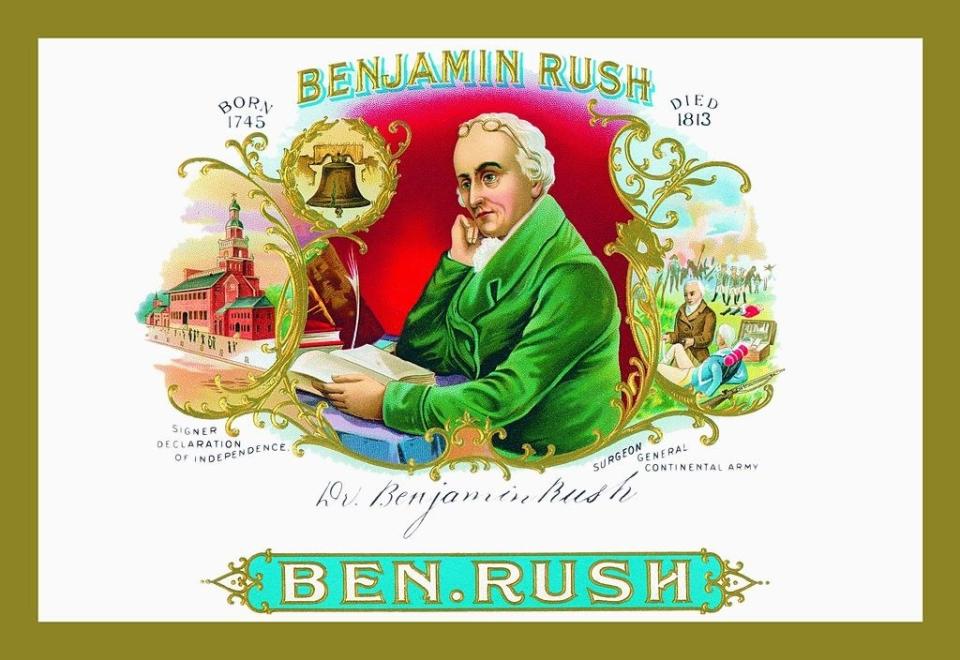
69.If you've ever felt like you're walking around in circles totally lost at a mall, you're not alone. Places like malls and casinos are designed to disorient patrons. This phenomenon is known as the Gruen Transfer, and was developed by Victor Gruen, who helped build the first indoor mall. He wanted to make the mall so alluring that customers would forget what they came in to buy to ensure they would make impulse purchases.

70.While you might have thought that sirens were always beautiful creatures with irresistible charm, they actually were first written as bird-like creatures who lured sailors in through song to disorient them. One of the most famous depictions of the sirens comes from Homer's Odyssey. However, in the epic poem, Homer never actually describes what the sirens look like, so historians have turned to depictions from early Greek art. In works that date back to the fifth century, sirens are portrayed as birds, and are later shown as fish-like creatures as Christianity became more prevalent in Europe.
PBS / Via giphy.com
By the seventh century, the sirens had began to morph into women. In The Book of Monsters, they are described as beautiful women with scales. As mermaid lore grew in popularity, the scales disappeared and sirens were portrayed as beautiful but deadly women. In 1891, John William Waterhouse released a painting that depicted sirens as their original bird-like personas, and received backlash for his interpretation, even though it was technically historically accurate.
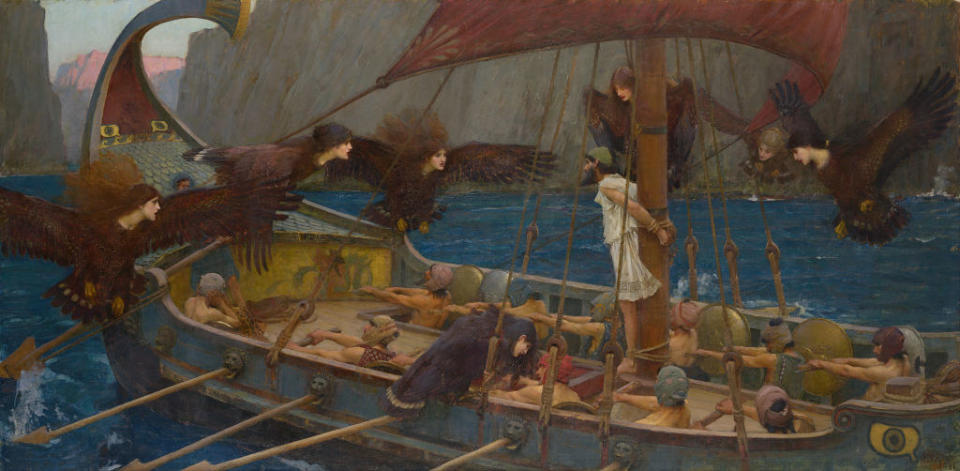
71.Imagine emailing a tree! That's exactly what happened in Melbourne, Australia, when officials assigned trees their own email addresses. The emails were supposed to give residents an opportunity to let city officials know about damaged trees to expedite their restoration, but instead of tips about trees in need of some TLC, they ended up getting tons of emails about how much the residents loved the trees.

72.When The Exorcist hit theaters in 1973, the public knew the horror flick was based on a true story, but had no clue who the actual child was until December 2021. Ronald Edwin Hunkeler, who had previously been known as Roland Doe to protect his identity, underwent several exorcisms in 1949. William Peter Blatty, who wrote both the book and the movie, learned about Hunkeler while attending Georgetown University, and decided to write about his alleged demonic possession and subsequent exorcism attempts.

Hunkeler was raised in Cottage City, Maryland, where he began experiencing paranormal activities at age 14. His family sought help, and eventually connected with William Bowdern, a Jesuit who performed about 20 exorcisms on Hunkeler. By August 1949, the devil had supposedly escaped Hunkeler while he was being treated at a hospital in St. Louis.
Warner Brothers / Via giphy.com
After the exorcisms, Hunkeler went on to work for NASA. He contributed to the Apollo space missions, and even developed a new technology that helped the panels on space shuttles withstand intense heat. Sadly, Hunkeler lived much of his life in fear that his identity would be discovered at work, and that his colleagues would ridicule him for his past. “On Halloween, we always left the house because he figured someone would come to his residence and know where he lived and never let him have peace," one of his close companions said shortly after his death. She also noted that Hunkeler believed that he had never actually been possessed, and shunned religion because of it.

73.In 1983, the Goodyear blimp was named the official city bird of Redondo Beach, California, ahead of the 1984 Olympics, which were held in Los Angeles. The blimp earned the honor after people noted that it was a fixture in town, and wondered where it went anytime it was moved for an appearance.

74.Due to high heat and dangerous levels of pressure, it's nearly impossible for any spacecraft to land on Venus. In fact, Russia is the only country that has ever been able to photograph the planet. In 1975 and 1982, the Soviet Union's Venera probe was able to take the only known images of Venus. The pictures revealed yellow skies and a cracked landscape. Scientists believe this might have been what Earth looked like before experiencing climate change.

75.In the fall of 1967, Otis Redding underwent throat surgery. He was worried that he wouldn't be able to perform the way he used to after the surgery, and decided he was going to write a song that suited his new voice. He wrote "Sitting on the Dock of the Bay" in November 1967, and was so excited about it that he called his guitarist to come to the studio immediately so they could get to work. His record label said they didn't think the song would do well because it didn't fit squarely into any genres.

On December 10, just weeks after recording "Sitting on the Dock of the Bay," Redding died in a plane crash. His record label decided to release the song, which was slightly incomplete. Although his guitarist had been instructed to tweak the song before it could be released, he sent it back as Redding had left it, and the label agreed to release it. "Sitting on the Dock of the Bay" performed incredibly well, becoming Redding's first Billboard No. 1 song. Redding even won two posthumous Grammys for the song.
76.Giraffes have incredibly high blood pressure because of their long necks. While high blood pressure leads to health complications in humans, giraffes have been able to avoid similar issues for a few reasons. Giraffes have a different heart rhythm than that of other mammals, allowing the heart to pump the correct amount of blood to compensate for their elevated blood pressure. They also have a tight wrapping of connective tissue on their legs, which prevents their legs from swelling.
Brookfield Zoo / Via giphy.com
77.When the Strokes released "Last Nite" in 2001, people began drawing comparisons between the song and Tom Petty's "American Girl." Julian Casablancas, lead singer of the Strokes, admitted that they took some inspiration from Petty's song. "People would say, 'You know that song 'American Girl' by Tom Petty?' 'Don’t you think it sounds a little like that?' And I’d be like, 'Yeah, we ripped it off. Where you been?'" In 2006, Petty said he found it hilarious that the Strokes had admitted to ripping off his song, and said he saw no problem with it.

At this point, Petty was no stranger to being a huge influence on new music. Fans had long been comparing Petty's "Mary Jane's Last Dance" and the Red Hot Chili Peppers' song "Dani California." Petty even made some comments about how he thought a lot of rock songs sounded exactly the same, and how he believed lawsuits over pop songs were "frivolous." Despite his supposed distaste for lawsuits, in 2015, Petty sued Sam Smith over their song "Stay With Me," claiming Smith copied off of Petty's 1989 song "I Won't Back Down." The suit was settled out of court, with Smith agreeing to pay Petty royalties for the song.

78.The microwave was invented in 1945 as a total accident. Percy LeBaron Spencer was an engineer working in a lab where they were testing microwave-producing magnetrons. Legend has it that Spencer had a candy bar in his pocket that completely melted when he stood in front of the machinery. From there, he put a bag of unpopped popcorn in front of the magnetron. When it popped, he realized that the microwave radiation could quickly cook food, and soon filed a patent for the first microwave.
Giphy / Via giphy.com
79.Before the 1950s, most TV programming for children was strictly for entertainment, and didn't have much, if any, educational value. In 1952, TV execs sought to change this, and asked Frances Horwich, a teacher who had been known for supervising the development of preschools in Chicago following the Great Depression, to host Ding Dong School, a show designed to both educate and entertain. The first episode of the show aired in Chicago in October 1952, and soon, the network was flooded with letters about how much their children loved the show. Within months, NBC decided to broadcast Ding Dong School all over the country.

Horwich, who had years of experience in education, notably refused to cater to the network's demands if they didn't align with educational goals. In one instance, the network tried to paint strawberries a more vibrant shade of red to allow them to pop on the broadcast. Horwich refused, saying it compromised her show's integrity. After seeing the success of the show, NBC approached her about extending the episode lengths to 60 minutes each. She declined because she believed children didn't have an attention span to sit through shows longer than 30 minutes.
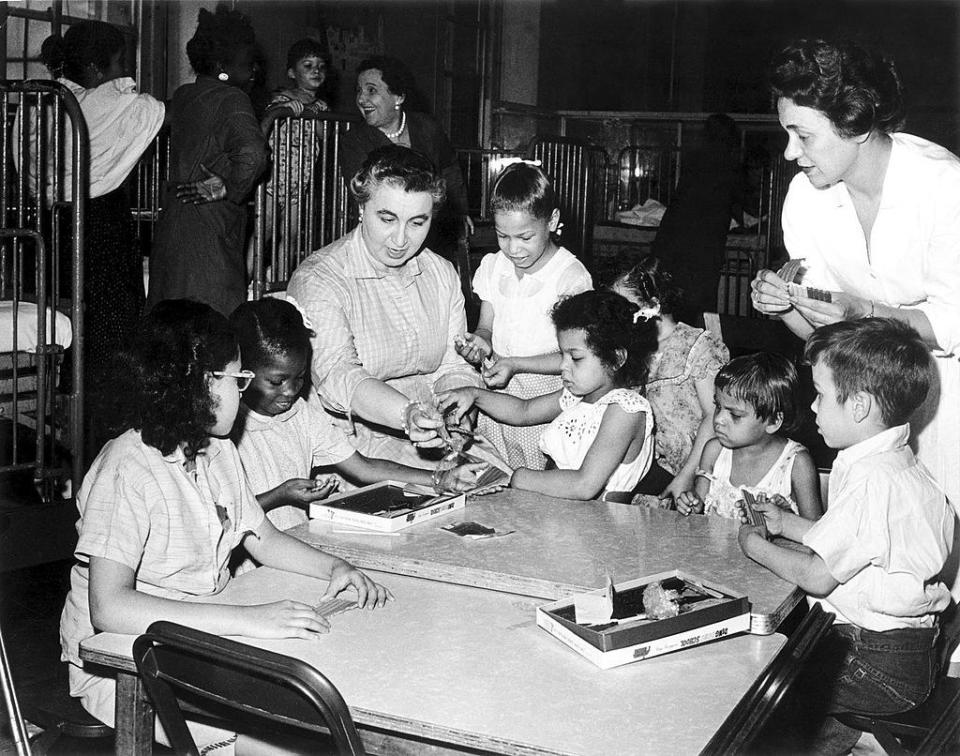
By this point, NBC was well aware of Horwich's expertise, and offered her a job as their corporate supervisor of children's programs. In 1956, she learned NBC planned to air an ad from the maker of BB guns during Ding Dong School. Horwich was horrified and refused to allow the ad to air. NBC canceled the show as a result. The network received over 100,000 letters from fans begging them to bring the show back. The show finally returned to syndication, and later paved the way for programs like Mister Rogers' Neighborhood and Sesame Street.

80.The Star Wars theme was purposely written as the perfect segue from the 20th Century Fox opening fanfare, and even saved the fanfare from fading into obscurity. It had been composed in the 1930s, and was seldom used, but George Lucas enjoyed it so much that he wanted to ensure it had a place at the beginning of his films. After Disney purchased Lucasfilm, they stopped using the 20th Century Fox fanfare, upsetting fans.
81.The United States Department of Agriculture keeps a stockpile of over 1.5 billion pounds of cheese and other goods in a series of caves in Springfield, Missouri. It all began in 1949, when the USDA introduced the Dairy Product Price Support Program to support farmers when the price of milk fluctuated by purchasing the excess for a fixed rate. Once the price rose back to normal levels, the USDA would sell off the stock.

The program lasted until 2014, but the government still maintains their stash for food assistance programs. As of May 2022, the USDA is storing an estimated 1.5 billion pounds of cheese, along with 355 million pounds of butter, 211 million pounds of pecans, and just under a billion pounds of french fries.
Bravo / Via giphy.com
82.Mako sharks are known as the "cheetahs of the ocean," and are able to swim up to 60 miles per hour. They have flexible scales that allow them to make tight turns while hunting down prey.

83.It is believed that Albert Einstein and his first wife, Mileva Marić, had a daughter out of wedlock in 1902, when both Albert and Mileva were students at Zurich Polytechnic. In 1901, Mileva abruptly left school and returned home to Serbia, where she gave birth to Lieserl, the couple's first child. By 1903, the couple had married, but there was no sign of Lieserl in any records. In fact, historians had no idea Lieserl even existed until letters found in 1986 revealed her birth and subsequent disappearance.
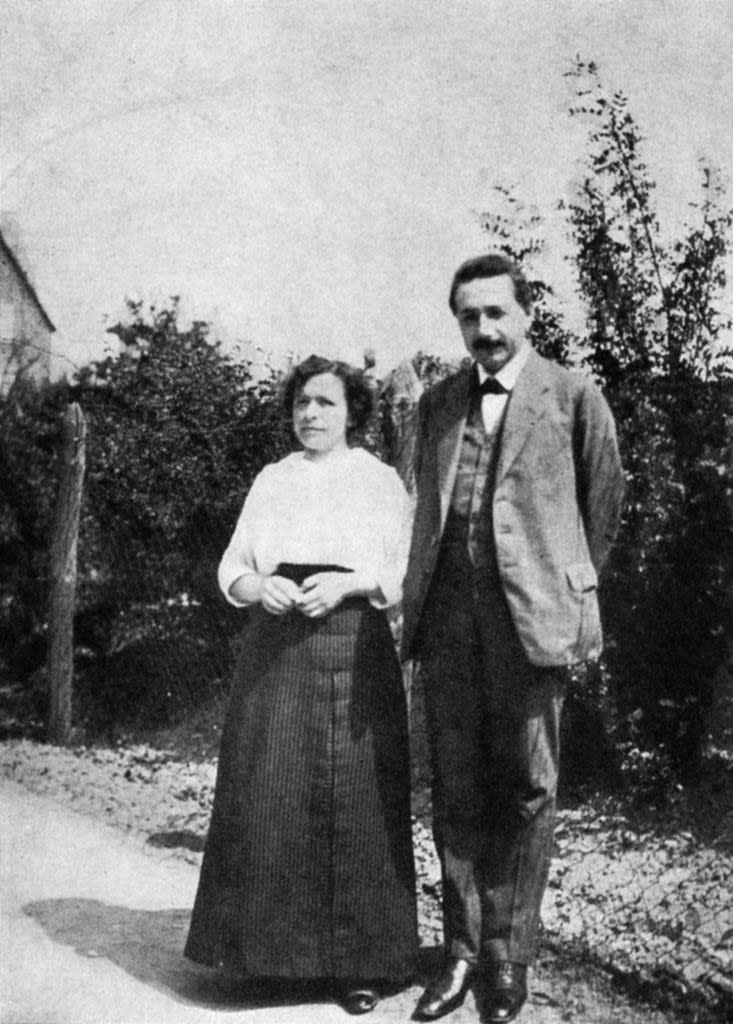
In 1999, Michelle Zackheim published Einstein’s Daughter: The Search for Lieserl, a book investigating what actually happened to Lieserl. In the book, Zackheim hypothesized that the child had been born with developmental disabilities. Mileva left her with her family so she could travel back to Albert, who was finishing up his education in Switzerland. Just before her second birthday, Lieserl died. Some letters insinuate that Lieserl had scarlet fever, although she appears to have recovered in subsequent letters. It's believed that Albert never met his first child. Scholars aren't even sure if Lieserl was the child's real name — it was commonly used as a generic placeholder name in Germany.

84.One of the most memorable lines from Jaws is "You're gonna need a bigger boat," spoken just as the shark emerges from the water. Turns out, the line was totally improvised, and actually came from an inside joke among crew members! Filming on the ocean required a ton of heavy equipment and lots of crew members. The support boat that was used to film scenes at sea often couldn't handle all of the equipment and manpower, so crew members often quipped, "You're gonna need a bigger boat," anytime something went awry. While filming the iconic scene, Roy Scheider decided to add in the joke, and movie history was made. The line even earned a spot on the American Film Institute's list of the top 100 movie quotes, coming it at number 35.
Universal / Via giphy.com
85.And finally, you probably knew Josephine Baker was an Old Hollywood legend, but did you also know she was a spy for the French Resistance during World War II? Baker, whose parents were also performers, made a name for herself as a dancer in Vaudeville shows. She moved to New York City and was a key figure in the Harlem Renaissance, until she headed to Paris, where her fame exploded. By the time World War II dawned, Baker had decided she wanted to take part in the war effort, and served as a French spy.

Baker performed in front of enemies, then passed along secrets and information she heard during the show to the French military. She would write details on sheet music with invisible ink to give to the French. After the war, she returned to the United States. As the civil rights movement gained traction, Baker refused to perform for segregated audiences, and spoke at the March on Washington in 1963. She was recognized by the NAACP for her efforts.


